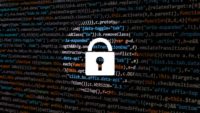The modern enterprise is a mobile enterprise. No longer are employees tethered to a cubicle and a corporate issued PC. Instead, corporate users rely on a wide variety of mobile devices to stay productive no matter where they’re physically located. However, the rapid growth of mobile devices brings with it a number of evolving operational, security and compliance challenges.
Increasingly, endpoint devices are being targeted by threat actors who recognize that once they can successfully compromise a trusted device, they can quickly escalate administrative privileges in order to infiltrate broader network systems. And given that the typical enterprise manages approximately 135,000 endpoint devices, there’s no shortage of targets for a bad actor to choose from.
While securing a sprawling universe of endpoint devices remains a key focus for enterprise CISOs, intertwined with this challenge is another critical concern: compliance. For organizations operating within highly regulated sectors, such as government, healthcare and financial services, compliance isn't just a legal necessity — it's a cornerstone of trust.
Frameworks like SOC 2 and ISO 27001 establish essential controls and programs to safeguard data security, user privacy and data availability. Adherence to these standards underscores a company's commitment to established security protocols, while regular checks and audits reinforce ongoing conformity with industry-accepted best practices.
While IT and security leaders grapple with securing an ever-expanding ecosystem of endpoint devices on the one hand, they must also simultaneously address the compliance implications associated with these user devices.
So in this frenzied juggling act of IT management, endpoint security and compliance, how do security leaders keep all these balls afloat?
The endpoint compliance conundrum
Between a global pandemic that radically changed the way many people work, the acceleration of digital transformation, and the broad adoption of affordable yet powerful mobile devices, it’s little wonder that asserting some measure of control over endpoint devices has become a top priority for IT leaders.
As the number and diversity of endpoints increases, so too does the need for comprehensive and proactive endpoint security as each new device represents another potential avenue of attack.
Further complicating these efforts is the fact that the enterprise is only growing more heterogeneous. Whereas a decade ago the vast majority of devices connecting to the corporate network were based on the Windows Operating System (OS), today’s "consumerized" enterprise must accommodate a broad array of devices running on iOS, Android and various Linux flavors, each with their own unique security and compliance considerations.
In the U.S., iPads now dominate the business tablet sphere while iPhones make up nearly half of the enterprise smartphone install base. But no matter the device in question, they all demand consistent updates to patch security vulnerabilities. Without a systematic method to distribute critical updates across diverse devices and operating systems, businesses stand vulnerable to malware intrusions and data breaches.
On the regulatory front, stringent and evolving data privacy mandates like the GDPR in the EU and the CCPA in the U.S. necessitate robust protection of personal data residing or processed on these devices.
In such a fast-changing and dynamic environment, Mobile Device Management (MDM) has emerged not just as a practical tool for securing endpoint devices but also as an indispensable tool for compliance assurance.
4 ways MDM bolsters security and compliance
At its core, MDM has been first and foremost thought of as a management tool, enabling IT departments to remotely administer device configuration, enforce corporate policies, and ensure data security. However, many forward-thinking IT leaders have come to appreciate that what makes MDM an effective security bulwark can likewise serve as a vehicle to streamline endpoint compliance.
Consider the following four ways that MDM can dramatically ease the compliance burden:
- Continuous audit and reporting: In an ever-evolving digital landscape marked by emerging technologies, threats and regulations, compliance cannot be a static, one-time exercise. Rather, it requires a fluid approach that can adapt to changing circumstances. MDM solutions, with their inherent auditing and reporting capabilities, empower IT departments to oversee crucial metrics and device usage seamlessly. Furthermore, MDM can facilitate the generation of reports that not only demonstrate compliance across a range of regulatory standards but also alert you when a device falls out of compliance.
- Data protection and encryption: As threat actors set their sights on vulnerable endpoint devices, security teams require the assurance that every endpoint device with access to their network has the proper data protection and encryption controls in place. Moreover, with government regulators intensifying their scrutiny on data protection and implementing stringent privacy laws worldwide, leveraging MDM's robust encryption and data management capabilities becomes not just a strategic move for security, but also a crucial step in ensuring regulatory compliance.
- Compliance enforcement: One of the key challenges IT departments face is being able to provide a consistent and secure user experience across a fleet of diverse endpoint devices. Whether it's restricting the use of certain third-party apps, enforcing strict passcode policies, or setting data access permissions, MDM is the key to enforcing all compliance controls, enabling businesses to dictate and maintain policies from a single interface while reducing the chance for manual errors that can render a device vulnerable. Furthermore, the ability of MDM to rapidly update and tweak policies in real-time serves to ensure that devices under management remain in compliance with both industry frameworks and government regulations.
- Device specific compliance: Compliance protocols for an Apple device can differ significantly from those for a Windows system. While certain policies — like those concerning passwords — might be universal, others demand a more tailored approach. Take for example how devices integrate with authentication systems like Active Directory, which can differ vastly between OS ecosystems. By acknowledging these differences, organizations can customize policies that cater to the specific strengths and vulnerabilities of each device and operating system.
While compliance can feel like an onerous burden that stifles innovation, it can also serve as a roadmap to better security, improved governance and shared accountability. As the enterprise continues to embrace new technologies and endpoints, a new generation of MDM tools figure to play an important role in integrating these elements, ensuring they not only coexist but also thrive.






